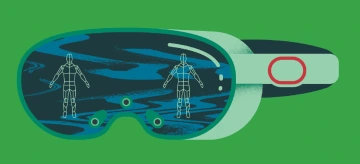
As technologies for virtual connection continue to evolve, the University of Arizona is using volumetric video to capture a person’s exact likeness, speech and movements in 3D video that can be recorded or broadcast live. Bryan Carter, director of the university’s Center for Digital Humanities, says this technology will transform education, merging 3D video with real-time, two-way audio between a projected person and an audience.
With the science around volumetric video in its earliest days, the university will study its potential in education throughout fall 2023. Students participating in the research will “bring” volumetric video of an instructor into their live environments on handheld screens or with special glasses.
As the instructor discusses objects in their surroundings, researchers will use sensors, eye-tracking and other technologies to log the students’ attention, focus and distraction, then analyze that data against measured learning outcomes. Surveys will also help the team better understand student thoughts and attitudes about their education experience.
Demand for distance learning skyrocketed during the pandemic. According to the National Center for Education Statistics, 75 percent of college students were taking at least one course online in fall 2020, and research projects significant growth for online education.
Online meetings also saw pandemic-driven growth. The video conference platform Zoom, for example, surged from 10 million to 300 million daily users from December 2019 to April 2020. Carter notes that virtual connection becoming part of everyday school and work is driving innovation: “We’ve all begun to experience the limitations of ‘presence’ associated with video conferencing or even virtual reality.”
